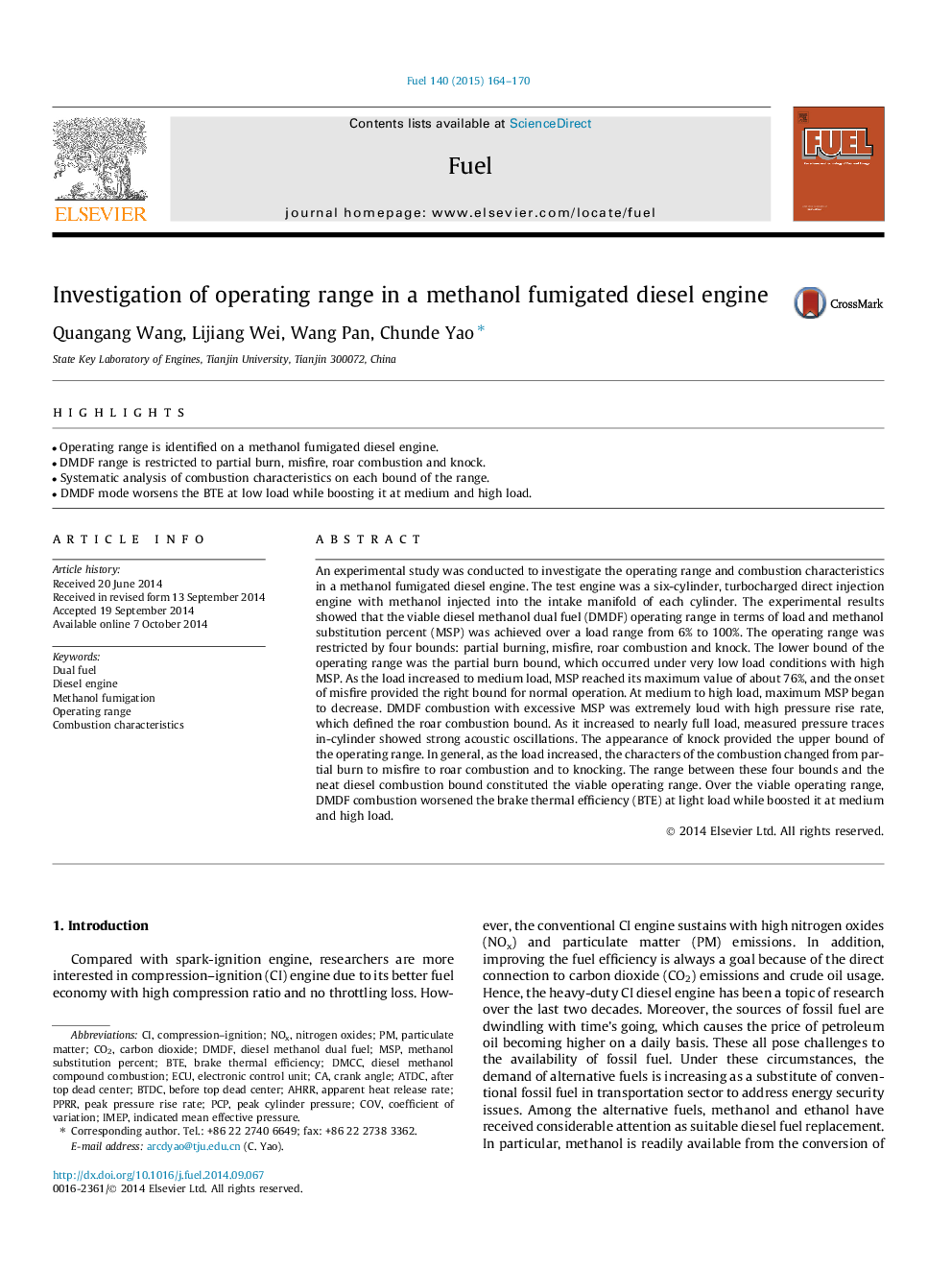| Article ID | Journal | Published Year | Pages | File Type |
|---|---|---|---|---|
| 6636166 | Fuel | 2015 | 7 Pages |
Abstract
An experimental study was conducted to investigate the operating range and combustion characteristics in a methanol fumigated diesel engine. The test engine was a six-cylinder, turbocharged direct injection engine with methanol injected into the intake manifold of each cylinder. The experimental results showed that the viable diesel methanol dual fuel (DMDF) operating range in terms of load and methanol substitution percent (MSP) was achieved over a load range from 6% to 100%. The operating range was restricted by four bounds: partial burning, misfire, roar combustion and knock. The lower bound of the operating range was the partial burn bound, which occurred under very low load conditions with high MSP. As the load increased to medium load, MSP reached its maximum value of about 76%, and the onset of misfire provided the right bound for normal operation. At medium to high load, maximum MSP began to decrease. DMDF combustion with excessive MSP was extremely loud with high pressure rise rate, which defined the roar combustion bound. As it increased to nearly full load, measured pressure traces in-cylinder showed strong acoustic oscillations. The appearance of knock provided the upper bound of the operating range. In general, as the load increased, the characters of the combustion changed from partial burn to misfire to roar combustion and to knocking. The range between these four bounds and the neat diesel combustion bound constituted the viable operating range. Over the viable operating range, DMDF combustion worsened the brake thermal efficiency (BTE) at light load while boosted it at medium and high load.
Keywords
methanol substitution percentMSPAHRRPCPPPRRaTDCIMEPDMCCdiesel methanol compound combustionDMDFECUbTDCNOxCOVpeak pressure rise rateNitrogen oxidesafter top dead centerDual fueldiesel methanol dual fuelCarbon dioxideparticulate matterBrake thermal efficiencyCrank Angleapparent heat release rateCoefficient of Variationbefore top dead centerOperating rangeDiesel engineIndicated mean effective pressureelectronic control unitBTECombustion characteristicsCO2
Related Topics
Physical Sciences and Engineering
Chemical Engineering
Chemical Engineering (General)
Authors
Quangang Wang, Lijiang Wei, Wang Pan, Chunde Yao,
